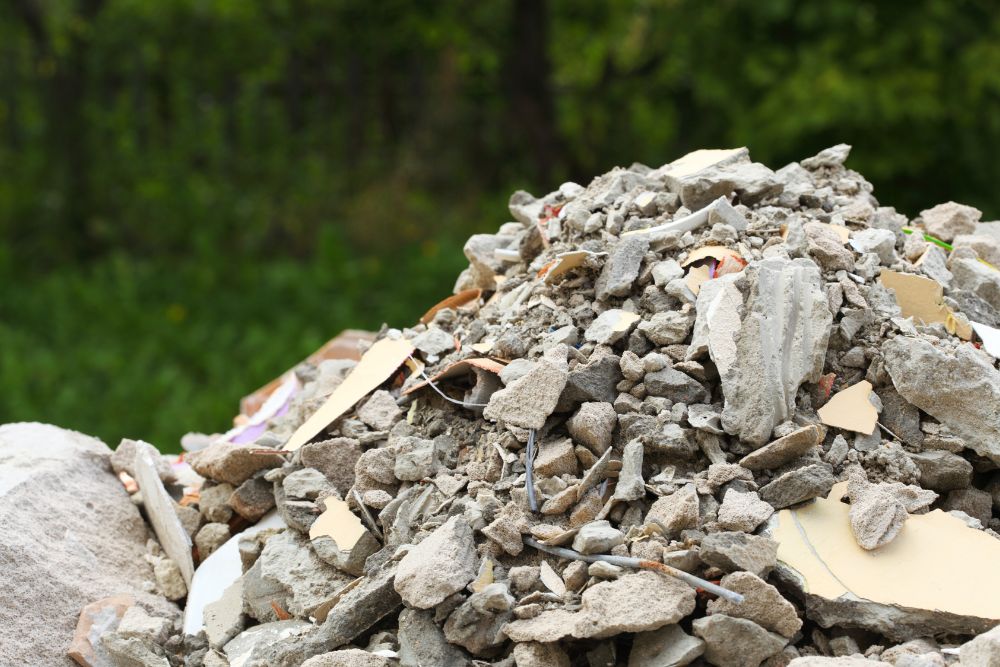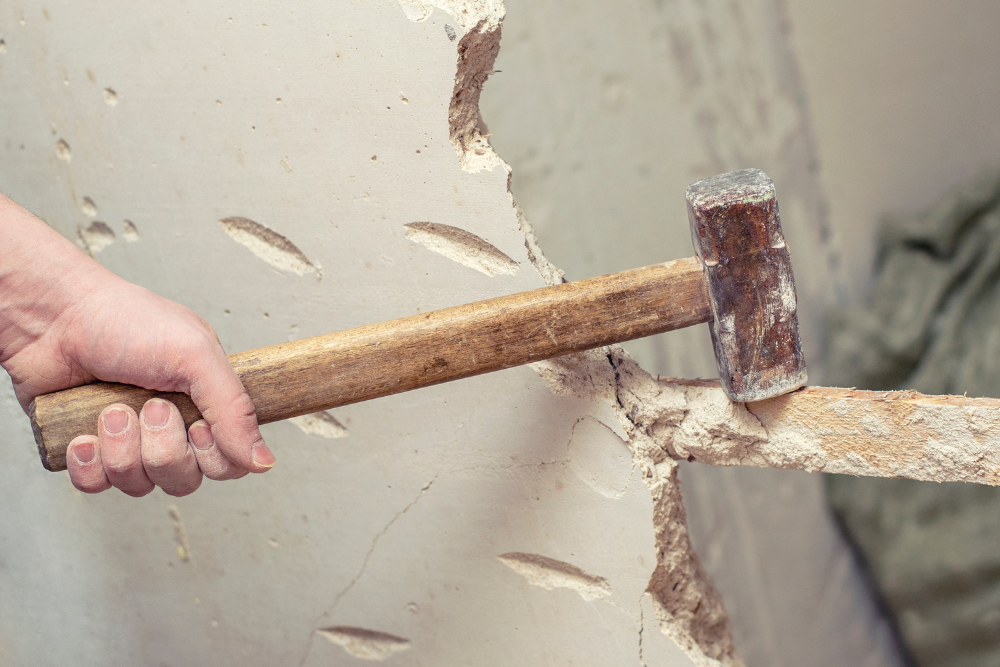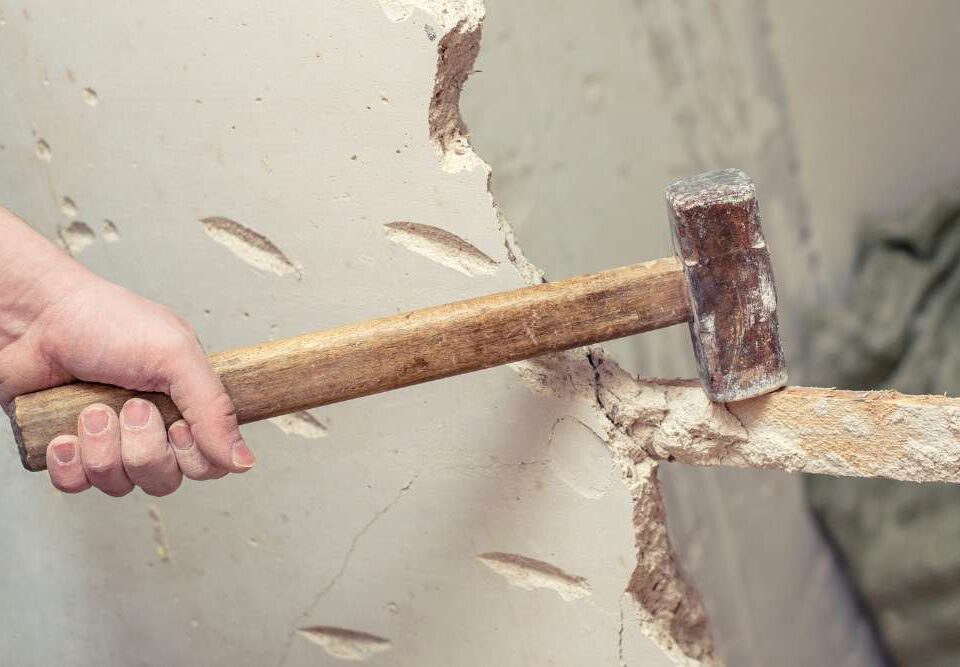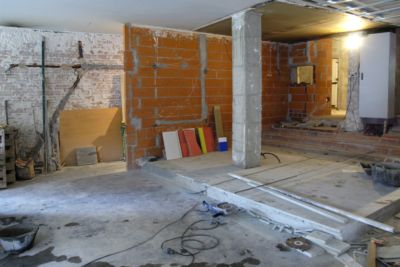
Best Practices for Flooring Removal and Disposal
September 10, 2025
How Drywall Removal Affects Home Renovations
September 10, 2025Demolition Cleanup Steps to Take After the Job is Done
The work of tearing down walls, breaking apart old fixtures, and hauling away heavy debris is only the beginning of a renovation project. Once demolition is complete, the cleanup phase plays a vital role in shaping how smoothly the next steps unfold. Too often overlooked, this stage determines whether a site is safe, organized, and ready for new construction. Cleanup involves more than sweeping floors; it requires thoughtful planning, proper waste disposal, and a careful eye to ensure nothing hazardous is left behind. By handling it effectively, homeowners and contractors set the stage for successful rebuilding.
Clearing out large debris efficiently
The first step after demolition is removing large debris that dominates the site. Pieces of wood, chunks of drywall, old fixtures, and shattered concrete often pile up quickly, making the space difficult to navigate. Tackling these oversized materials first clears pathways and restores a sense of order, preventing injuries and keeping the project on track. Using heavy-duty bins or designated piles for sorting makes this process more manageable.
Efficiency in debris removal depends on organization. Separating materials that can be recycled from those that must be discarded saves time later when coordinating disposal. Professional crews often use trailers or roll-off containers to haul away large loads at once, minimizing downtime. For homeowners tackling cleanup themselves, prioritizing these big items before smaller details helps streamline progress. With the bulky pieces gone, the renovation area begins to resemble a workable site again rather than a demolition zone.
Sweeping and vacuuming for dust control
Demolition creates clouds of dust that linger long after walls or floors are removed. Fine particles settle on every surface and often spread beyond the work zone. Sweeping with stiff brooms clears heavier accumulations, but dust vacuums with HEPA filters are necessary for finer particles. This step not only improves air quality but also prevents dust from contaminating new materials once rebuilding begins.
Dust control also protects the health of anyone on-site. Extended exposure to particles from drywall, insulation, or old paint can irritate lungs and cause lasting respiratory problems. Establishing a routine of frequent sweeping and vacuuming during cleanup reduces these risks significantly. It also makes the environment safer for contractors installing wiring, plumbing, or new finishes. Dust control may seem like a small detail, but it plays an essential role in transforming a hazardous site into a clean canvas for the next phase of work.
Sorting materials for recycling and disposal
Not all demolition waste belongs in a landfill. Many materials can be recycled, which reduces environmental impact and sometimes lowers disposal costs. Metals, clean wood, and certain types of drywall or concrete often qualify for recycling at specialized facilities. Sorting these materials during cleanup saves time and helps ensure that recyclable items don’t end up in general trash piles.
This step requires some planning and knowledge of local recycling guidelines. Some areas enforce strict rules about construction debris, while others offer dedicated drop-off points. Proper sorting also helps contractors avoid fines for incorrect disposal. For homeowners managing the process, labeling bins and creating designated piles can make recycling much easier. By handling materials responsibly, demolition cleanup becomes more than just clearing space—it becomes a chance to make the project more environmentally sustainable.

Inspecting for hidden hazards after demolition
Once debris is cleared, a closer inspection of the site is necessary to identify potential hazards. Nails protruding from wood, shards of glass, or fragments of tile can easily be missed during the rush of cleanup. Walking the site carefully and collecting these hazards reduces the chance of injuries for anyone working in the area.
In older homes, hidden risks like asbestos or lead paint may also come to light. If uncovered during demolition, these require professional handling to ensure safety. Even smaller issues, like uneven flooring or exposed wiring, need to be addressed before reconstruction begins. A thorough inspection guarantees that no lingering danger remains. This stage might feel meticulous, but it is essential in transitioning from demolition chaos to a controlled environment prepared for building.
Managing leftover fixtures and appliances
Demolition often leaves behind more than just broken drywall and wood. Large items like sinks, cabinets, or appliances sometimes survive intact and must be removed separately. These pieces take up valuable space and can stall the renovation if not dealt with promptly. Deciding whether they will be reused, donated, or disposed of helps keep the cleanup process moving forward.
Some items may have resale or recycling value, particularly appliances or metal fixtures. Donating them to local organizations can prevent unnecessary waste while benefiting others. For items too worn to repurpose, arranging proper disposal ensures the site is cleared effectively. Managing leftover fixtures requires both physical labor and decision-making, but handling it early prevents clutter from complicating the rebuild. By treating these items thoughtfully, cleanup becomes more organized and environmentally considerate.
Ensuring safety before construction resumes
Safety during cleanup is just as important as it is during demolition. Once large debris and dust are removed, it’s critical to verify that the environment is secure for the next crew to enter. That means ensuring floors are clear of trip hazards, stairways are unobstructed, and all exposed nails or screws are removed or hammered flat. A safe workspace reduces the risk of accidents during the building phase.
This step also involves checking that utilities like gas, water, and electricity are properly managed. Reconnecting these systems without confirming safety could lead to dangerous situations. Taking the time to review site conditions allows contractors to focus on construction instead of worrying about lingering hazards. Safety preparation after cleanup ensures that the renovation continues smoothly and with minimal disruption, protecting both workers and the property itself.
Organizing the space for new work
A clean site is only half the battle—organization matters just as much. Once debris is removed and safety hazards are addressed, preparing the space for the next phase of construction streamlines the process. That might involve arranging tools, stacking new materials in designated areas, or mapping out clear walkways for easy access.
Organized spaces save time and improve efficiency. Contractors can move freely without tripping over clutter, and materials are easier to locate when they’re needed. This organization also creates a professional environment, setting the tone for the renovation work that follows. By transitioning from demolition debris to a well-ordered site, homeowners and crews ensure the project stays on schedule and avoids unnecessary setbacks caused by disorganization.
Considering professional cleanup assistance
While some homeowners attempt to manage demolition cleanup themselves, the workload is often heavier than expected. Professional cleanup services bring experience, specialized equipment, and disposal resources that make the process much faster and more thorough. Hiring experts means debris is removed efficiently, dust is controlled, and materials are disposed of in compliance with local regulations.
Although professional help involves a cost, it often saves money in the long run by reducing delays and preventing mistakes. Crews can handle large loads of debris in a single trip, something that might take homeowners multiple weekends to achieve. For those with tight renovation timelines, professional assistance is often the smartest choice. It ensures that once demolition is done, the cleanup is handled swiftly, allowing construction to resume without unnecessary delays.
Planning disposal logistics in advance
Effective demolition cleanup doesn’t happen by accident—it requires planning before the first wall comes down. Coordinating dumpsters, trucks, or waste bins ahead of time ensures debris has a place to go immediately. Without this foresight, materials can pile up quickly, creating safety hazards and slowing progress.
Advanced planning also includes checking local regulations for debris disposal. Some areas restrict how certain materials can be handled, and failing to comply can result in fines. By arranging logistics early, homeowners and contractors can streamline cleanup, saving both time and stress. This preparation turns a potentially chaotic stage into a smooth, predictable process. In the end, having a disposal plan ready makes cleanup far less daunting and sets the stage for a seamless transition to reconstruction.
Restoring the site for construction readiness
The ultimate goal of demolition cleanup is preparing the space for what comes next. By the end of this stage, the site should be free of debris, dust, and hazards, resembling a blank canvas ready for building. Achieving this requires attention to detail, from sweeping corners to removing stray nails. A site that is fully restored is easier for contractors to work in and inspires confidence in the renovation’s progress.
Restoring readiness also includes final checks of utilities, ensuring the framework of the structure is intact, and verifying that access points are clear. This creates a smooth handoff between the demolition and construction phases, reducing downtime. When done thoroughly, cleanup transforms a chaotic scene into a fresh start, marking the true beginning of the renovation journey.
Conclusion
Demolition cleanup is more than an afterthought—it is a critical stage that determines how efficiently a renovation can move forward. From hauling out large debris to controlling dust, recycling materials, and restoring safety, each step contributes to preparing a site that is both clean and functional. Without proper cleanup, construction teams face delays, hazards, and disorganization that can derail timelines and budgets. Thoughtful planning and execution of this phase set the tone for the success of the entire project.
For homeowners in Santa Rosa, CA, North Bay Junk Removal offers expert demolition cleanup services tailored to meet these needs. Their team ensures waste is removed responsibly, sites are restored to construction readiness, and junk removal is handled with care. With their support, homeowners can focus on the excitement of renovation instead of the stress of debris. Call 707-478-6817 to schedule services and take the first step toward a seamless project.




